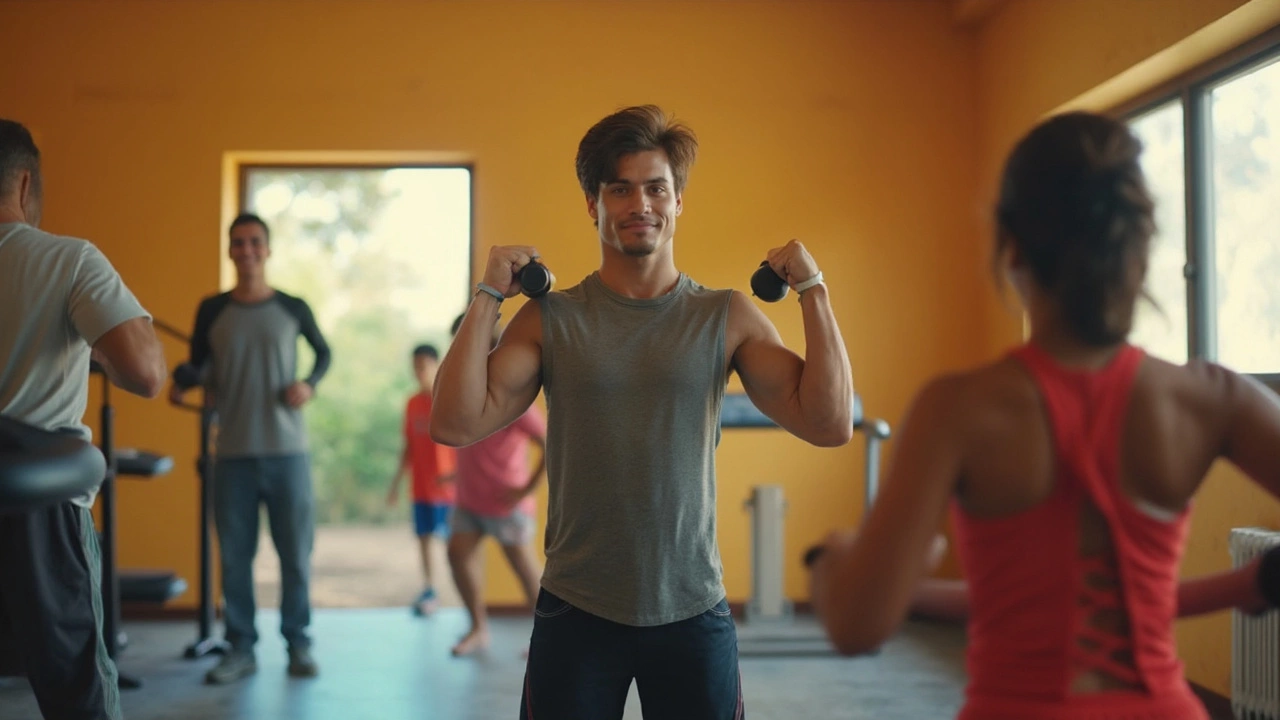Workout Age: Train Smart at Any Age
Ever wonder why a 20‑year‑old can lift heavier than a 50‑year‑old? It’s not just genetics – it’s how the body changes over time. The good news? You can still get great results at every age if you match the routine to what your body needs right now. Below you’ll find easy‑to‑apply advice that works whether you’re just starting out, hitting a mid‑life plateau, or looking to stay active in retirement.
Why Age Matters in Your Workout
Age influences three main things: muscle strength, joint flexibility, and recovery speed. Younger folks usually have plenty of fast‑tw twitch fibers, so they can sprint, jump, and lift heavy without feeling sore for days. As you get older, those fibers shrink, tendons become less elastic, and hormone levels shift. That doesn’t mean you stop improving – it just means the focus shifts to preserving range of motion, maintaining bone density, and avoiding over‑training.
Another factor is life’s schedule. Teens may have school and sports, adults juggle work and family, while seniors often have more free time but may face health restrictions. Your workout plan should respect both the physiological changes and the practical realities of your day.
Practical Tips for Different Age Groups
Teens (13‑19): Build a solid foundation with bodyweight moves – push‑ups, squats, planks – before adding heavy weights. Aim for 3‑4 sessions a week, each lasting 45‑60 minutes. Keep it varied: mix cardio, strength, and flexibility to prevent boredom and support overall growth.
20‑30s: This is the prime window for strength gains. Focus on compound lifts like deadlifts, bench press, and squats. Use progressive overload – add a little weight each week. Include high‑intensity interval training (HIIT) two times a month to boost heart health without stealing time from lifting.
30‑40s: Recovery starts to need more attention. Stick to 3‑4 workouts, but insert an active‑recovery day with light cycling or yoga. Strength training remains key; however, reduce volume slightly and prioritize proper form. Add mobility drills for hips, shoulders, and ankles to keep joints healthy.
40‑50s: Prioritize joint‑friendly movements. Replace heavy overhead presses with dumbbell rows and chest presses on a bench. Incorporate low‑impact cardio like swimming or elliptical. Aim for 2‑3 strength sessions weekly, using moderate weights and higher reps (10‑15) to protect tendons.
50‑60s: Focus on bone‑strengthening activities – resistance bands, light dumbbells, and bodyweight exercises. Balance work is crucial; try single‑leg stands or Tai Chi. Keep cardio moderate, such as brisk walking or stationary cycling, for 30 minutes, 3‑4 times a week.
60+ (Seniors): Safety comes first. Use machines that guide motion, like leg press or seated row, to reduce strain. Light resistance bands can improve muscle tone without risk. Stretch daily, especially hamstrings and shoulder blades, to maintain flexibility. Social exercise classes can add motivation and keep you consistent.
Regardless of age, a few universal rules apply: warm up for 5‑10 minutes, stay hydrated, and listen to your body. If a move hurts beyond normal muscle fatigue, stop and adjust. Consistency beats intensity – a 20‑minute walk every day beats a marathon‑style session once a month.
Finally, track progress in ways that matter to you. For teens, it might be mastering a pull‑up. For someone in their 50s, it could be walking an extra mile without joint pain. Celebrate those wins, and let them drive the next step in your workout journey.
So, no matter where you fall on the age spectrum, you can design a workout that fits your body, schedule, and goals. Start small, stay consistent, and watch the benefits stack up year after year.
